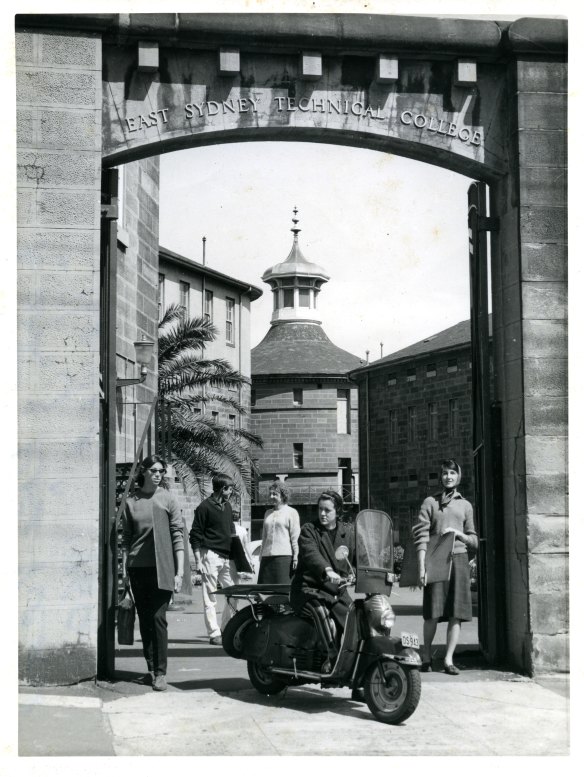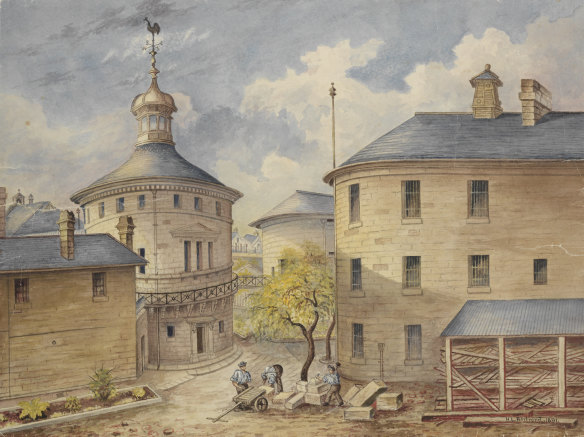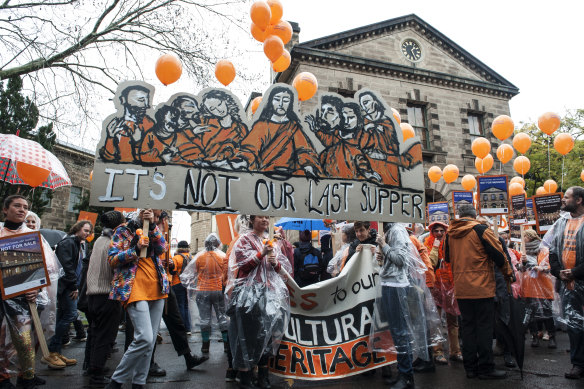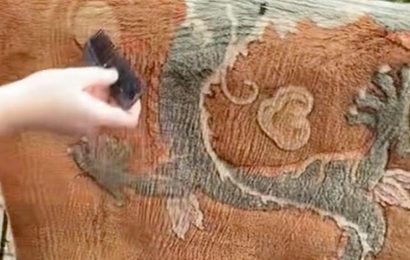HISTORY
Captivate: Stories from the National Art School and Darlinghurst Gaol
Deborah Beck et al
National Art School, $50
Artist Karla Dickens, the subject of Blak Douglas’ 2022 Archibald Prize-winning portrait, recently joked that after a stint in rehab in her early 20s, she ended up in the best jail in Australia that helped save her life: the National Art School.
NAS students 1960, unknown photographer. The students are Ann Thomson, Martin Sharp, Leonie Ferrier, Vivienne Binns (on bike) andRose Vickers.Credit:National Art School Collection
NAS alumni including Charles Blackman, Brett Whiteley, Cressida Campbell, Margaret Olley, Ken Done, Garry Shead, John Olsen, Martin Sharp and Ann Thomson would likely agree with the life-saving aspects of the longest continuing art school in Australia.
But who knew it also provided artistic inspiration for inmates in its previous incarnation as the Darlinghurst Gaol, built 201 years ago in 1822? Inmate like bushranger Captain Starlight, who along with his list of dubious life accomplishments – pathological liar, serial impostor, thief, conman and killer – was also an artist who painted and drew in his cell block.
And Henry Louis Bertrand, aka the Demon Dentist of Wynyard Square, who had his 1866 hanging sentence commuted to life after murdering his lover’s husband, and after 29 years became NSW’s longest serving prisoner. He whiled away his time there doing water-colour illustrations that today provide a rare glimpse of 19th-century life behind the infamous sandstone walls.
Not to mention the other lesser-known convicts whose work is contained in the incredible scrapbook of prisoners’ artwork collected by John Cecil Read, Darlinghurst Gaol governor from 1861 until 1889.
Henry Louis Bertrand’s Darlinghurst Gaol, 1891, watercolour on paperCredit:Mitchell Library, State Library of NSW
A new book, Captivate, Stories from the National Art School and Darlinghurst Gaol, published to celebrate the art school’s centenary and the jail’s bicentenary, gathers together these less well-known stories, that are as colourful as any NAS graduate’s canvas.
The stories from the jail and the art school are written mostly by NAS Archivist and Collections Manager Deborah Beck, who has written previous books on the history of the jail (Hope in Hell), Cell Block Theatre (Set in Stone) and about Rayner Hoff, master sculptor and director at NAS.
It also has chapters by NAS board member and journalist Jennifer Byrne; NAS Head of Undergraduate Studies Lorraine Kypiotis; and former Sydney Morning Herald arts writer Jacqui Taffel, who is now in charge of media liaison at the school.
Captivate outlines the chronology of the jail-turned-art school, which spent its first hundred years as a place of incarceration, and the next 100 as an artistic sanctuary.
National Art School protest rally in 2016.Credit:Deborah Beck
Construction began in 1822 on the highest hill in the new colony of the jail’s sandstone walls, still standing today with their original convict markings.
Darlinghurst Gaol opened nearly 20 years later in 1841 and operated until 1914. During that time, many thousands of men and women were imprisoned there. Some only stayed a few days, some served a life sentence, and 76 people were hanged.
In 1922, the site was taken over by East Sydney Technical College, including its art department, which in 1926 was renamed the National Art School. It went on to become Australia’s leading art school and launched the careers of many notable and successful artists, but NAS has also spent decades fighting for its survival and freedom to remain independent.
The book outlines the various chapters of the site’s life from infamous inmates to the Cell Block Theatre, launched by American actor Katherine Hepburn and dancer Robert Helpmann in 1955, which later helped launch the career of many fine actors including Mel Gibson.
There are illuminating tiny details such as the 1866 carved sandstone keystone by the Aboriginal inmate known as “Billy of Namoi” who was described by the foreman who built the 1870 chapel there as “the best stonemason he had”. And there are stories of those who spent time behind bars such as Louisa Collins, the first woman hanged there in 1889, outlaw Jimmy Governor, and even poet Henry Lawson who spent time in the clink there for drunkenness and failing to provide child support.
Fabulous photos and illustrations make Captivate appropriately captivating. Like those of former NAS student Rosaleen Norton, known as “the witch of Kings Cross”, who before becoming known for her “satanic rituals” and “flamboyant sex life” that led to the downfall of Sydney Symphony conductor Sir Eugene Goosens, was a nude model for her fellow students.
Captivate will no doubt find a home on the bookshelves of its extensive artistic alumni. But also deserves to be read by any lover of Australian art, or indeed Sydney history buff.
The Booklist is a weekly newsletter for book lovers from books editor Jason Steger. Get it delivered every Friday.
Most Viewed in Culture
From our partners
Source: Read Full Article










